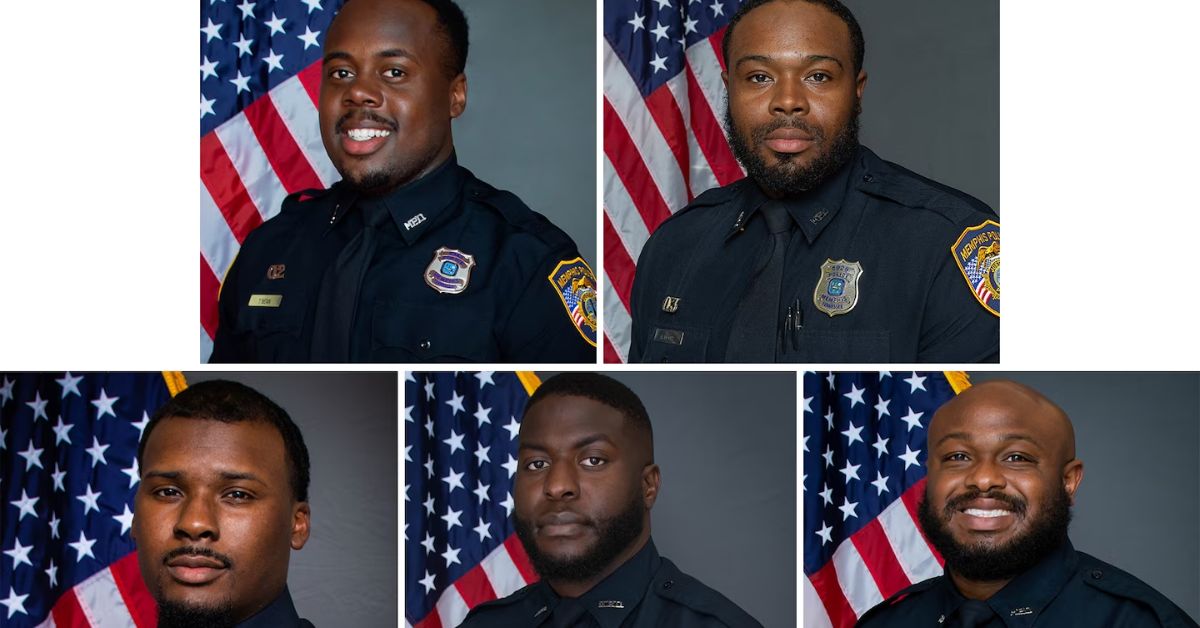It’s been almost three weeks since a Memphis traffic stop ended with a violent arrest and the death of a 29-year-old Black driver three days later. Tyre Nichols was taken to the hospital after being pulled over on January 7. Five Black officers of the Memphis Police Department were fired after an internal investigation, and they are now facing criminal charges, including second-degree murder.
Key questions are still unanswered as the country waits for police to release footage of the incident. People are already aware of how police treat people of color, especially after the mass protests of 2020.
What we know is:
The Police ‘Confrontation’
A statement from Memphis police says that at 8:30 p.m. on January 7, officers stopped a car they thought was being driven recklessly.
Memphis police say that there was a fight between officers and the driver of the car, who was later identified as Nichols. Nichols then ran away on foot. Officers caught him, and then “another fight broke out,” which led to Nichols’ arrest, police said.
It’s not clear what about his driving might have seemed reckless, how far Nichols ran on foot, who was involved in the first police encounter, how officers caught him, how long these “confrontations” lasted, why officers felt the need to confront Nichols twice, or where this happened.
At a press conference on Thursday, Shelby County District Attorney Steve Mulroy said that it took “a period of time” for Nichols to get medical help after he was hurt by Memphis police officers during a traffic stop.
Mulroy said that Nichols and a few police officers got into an argument after a traffic stop. Nichols ran away when pepper spray was used, he said.
“There was another fight at a nearby place, which is where Mr. Nichols got the serious injuries,” Mulroy said next. “After some time of waiting around, he was taken away by an ambulance.” Three days after the stop, on January 10, the Tennessee Bureau of Investigation said in a statement that Nichols had died from injuries he got in the “use of force incident with officers.”
According to the preliminary results of an autopsy that his family’s lawyers paid for, Nichols had “extensive bleeding caused by a severe beating.” “We can say that preliminary findings show Tyre was severely beaten and had a lot of bleeding, and that his injuries match what his family and lawyers saw on the video of his fatal encounter with police on January 7, 2023,” said attorney Benjamin Crump in a statement.
CNN has asked Crump for a copy of the family-ordered autopsy, but he has said that the full report is not ready yet. The autopsy of Nichols has also not been made public.
More News:
- 5 Police Officers In Memphis Have Been Terminated For Their Roles In Tyre Nichols’s Death
- Trump Comments After Meta Announces His Two-year Facebook Ban Is Over
All Five Officers Involved In Nichols’ Death Are Being Charged
After an internal investigation, Memphis police found five officers who were involved in the traffic stop and fired them because they had broken several department rules. The department said in a statement that Officers Tadarrius Bean, Demetrius Haley, Emmitt Martin III, Desmond Mills, Jr., and Justin Smith were fired for “excessive use of force, duty to intervene, and duty to render aid.”
According to records from both the Shelby County criminal court and the Shelby County jail, Martin III, Smith, Bean, Haley, and Mills, Jr. have all been charged with second-degree murder, aggravated assault, two counts of aggravated kidnapping, two counts of official misconduct, and one count of official oppression. Even though all five former officers have been charged, it’s not clear what role each officer played in the incident.
The Memphis Police Association, which is the officers’ union, said in a statement that it would not comment on the firings. Instead, it said that the city of Memphis and Nichols’ family “deserve to know the full story of what happened before his death and what may have contributed to it.”
Two Memphis Fire Department employees who helped Nichols during his “initial patient care” were also fired, according to Qwanesha Ward, the department’s Public Information Officer.
It’s not clear how much care those employees were giving Nichols or what kind of help, if any, was given. When CNN asked family lawyer Antonio Romanucci on Tuesday what those firefighters did or didn’t do, he said he couldn’t say much because of “limitations.” “Fire was there before EMS got there. “They are there with Tyre and the police officers before EMS arrives,” he said.

Who was Tyre Nichols?
Nichols was the youngest of four children, and his family said he loved being a father to his son.
His mother, RowVaughn Wells, said that he was a “good boy” who spent his Sundays doing laundry and getting ready for the week. “Does that sound like someone who did all these bad things, like the police said?” Wells said. “No one is perfect, OK, but he came pretty close.” His mother said that Nichols moved to Memphis before the Covid-19 pandemic and was stuck there when everything stopped.
Nichols worked the second shift at FedEx. When he wasn’t there, he liked to take pictures and skateboard, which he had been doing since he was 6. Nichols had Crohn’s disease, a digestive problem, and weighed only 140 to 145 pounds, his mother said, even though he was six feet, three inches tall.
Please let us know in the comments if you spot an error so that we may correct it. Leave your comments if you enjoyed reading this post. And keep checking back here Journalist PR for the latest updates in the news.
Leave a Reply